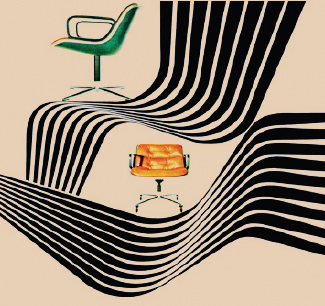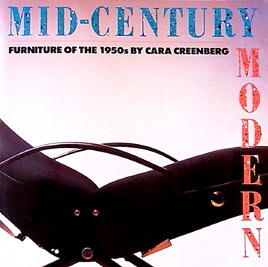Roaring Back - Page 6
 |
|
|
 |
|
|
|
|
'Mid-century Modern':
What Does It Mean?
During the mid-century modern era, roughly World War II through 1975, the term 'mid-century' was in wide use. But 'mid-century modern'?
Not hardly at all.
One early use, though, occurred in 1953 when designer J. Stuart Clingman was selling a line of furniture called 'Mid-Century Modern' at Wanamaker's department stores.
But architects of the era never used the term. "I would say [houses from the period] were 'modern.' There was no knowledge at that time of their being 'mid-century modern,'" says architect Walter Thomas Brooks, who designed the circular roadway plans for Eichler's Fairmeadow tract in Palo Alto.
The broader term 'mid-century' was used throughout the '50s and '60s to refer to 'mid-century' poetry, thought, dance, and the 'mid-century houses' produced in Los Angeles in 1950 by builder Walter Stackler.
Use of the term shows that people believed there was something about the period that was special.
"Mid-century traditions are reflected in the taste and economy of this small suburban house," the magazine House Beautiful wrote in November 1951.
"Every age develops a style which historians later regard as the tradition of the time. In the fifth decade of this century it is becoming clear what the tradition of our times is going to be," the article continued. That tradition, as seen in a flat-roofed modern home, was 'simple and unpretentious.'
The term 'mid-century modern' didn't come into regular use until the mid-1980s, after the publication of Cara Greenberg's book Mid-Century Modern.
"I made a list of potential titles after the book was written and sent it to my editor. She and I chose that one together," Greenberg says, adding, "Calling it '50s furniture' didn't sound very sexy.
Greenberg says she had no idea the term would become so popular—and regrets that it has, as she says it has lost meaning through misuse.
"I never really think of 'mid-century modern' as describing architecture. But you can use it as you like it."
"I notice it being wrongly used on eBay and Craigslist to encompass everything from Art Deco to contemporary," she adds.
"It sort of annoys me to use it now," Greenberg says. "I do whatever I can to avoid it. I'll say 'mid-20th century furniture,' or 'postwar furniture.'"
Does 'mid-century modern' have a meaning that differs from 'modern' when it refers to architecture and design?
Greenberg thought so, noting in her book that postwar furniture tended to be more comfortable and "popularly priced" than the prewar wares—and also more appealing to the public, less machine-style, and minimalist.
Alan Hess says much the same about architectural modernism that followed World War II. It had an appeal to middle-class buyers, and was produced affordably.
"I think what happened is, modernism blossomed then and spread," Hess says. "It became a dominant style. It had not been that before."
You might as well call it middle-class modernism.




